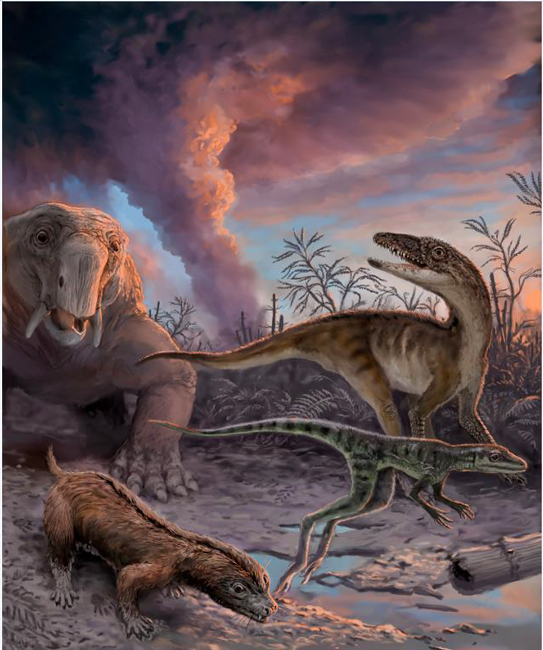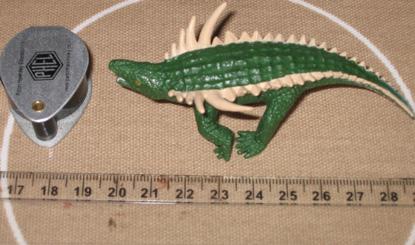The evolution of different types of herbivorous Triassic dinosaurs was helped by climate change and this played a key role in their rise to dominance of terrestrial ecosystems during the Mesozoic. Writing in the academic journal “Current Biology”, the researchers, which include Professor Richard Butler (University of Birmingham), postulate that it was climate change rather than competition that played a key role in the ascendancy of the Dinosauria.

Picture credit: Victor O. Leshyk
Triassic Dinosaurs
The scientists conclude that global climate change associated with the Triassic-Jurassic mass extinction event, which occurred approximately 201 million years ago, wiped out many types of terrestrial vertebrate and this opened up ecosystems for the Dinosauria to exploit. Large herbivores such as the Aetosauria (eagle lizards) died out and this permitted the Sauropodomorpha to diversify.
Sauropods Benefit
The lizard-hipped sauropods (Sauropodomorpha), in particular, were able to thrive and move into new territories as the Earth grew warmer after the end-Triassic mass extinction event.
Other scientists involved include researchers from Bristol University, the University of São Paulo (Brazil) and the Friedrich-Alexander University Erlangen-Nürnberg (FAU), in Germany.
Computer Generated Models of Global Climate Change
Computer generated models of palaeoclimates and changes to rainfall and temperature gradients were created using the extensive Paleobiology Database as the source of reference materials. The study demonstrated that the long-necked sauropods became more specious and geographically diverse as the planet experienced a period of global warming.
Dr Emma Dunne, a lecturer in palaeontology at FAU and one of the authors of the paper published today stated:
“What we see in the data suggests that instead of dinosaurs being outcompeted by other large vertebrates, it was variations in climate conditions that were restricting their diversity. But once these conditions changed across the Triassic-Jurassic boundary, they were able to flourish.”
Picture credit: Everything Dinosaur
The picture (above) shows a scale drawing of Lufengosaurus (L. huenei), from the Early Jurassic of south-western China. According to the researchers, sauropodomorphs like Lufengosaurus benefitted from a warming world permitting these types of herbivorous dinosaur to thrive.
Dr Dunne added:
“The results were somewhat surprising, because it turns out that sauropods were really fussy from the get-go: later in their evolution they continue to stay in warmer areas and avoid polar regions.”
Everything Dinosaur stocks the CollectA Age of Dinosaurs Popular range that contains several replicas of Triassic and Jurassic sauropodomorphs: CollectA Age of Dinosaurs Popular Range.
Professor Richard Butler commented:
“Climate change appears to have been really important in driving the evolution of early dinosaurs. What we want to do next is use the same techniques to understand the role of climate in the next 120 million years of the dinosaur story”.
Everything Dinosaur acknowledges the assistance of a media release from the University of Birmingham in the compilation of this article.
The scientific paper: “Climatic controls on the ecological ascendancy of dinosaurs” by Dunne et al published in Current Biology.








Leave A Comment